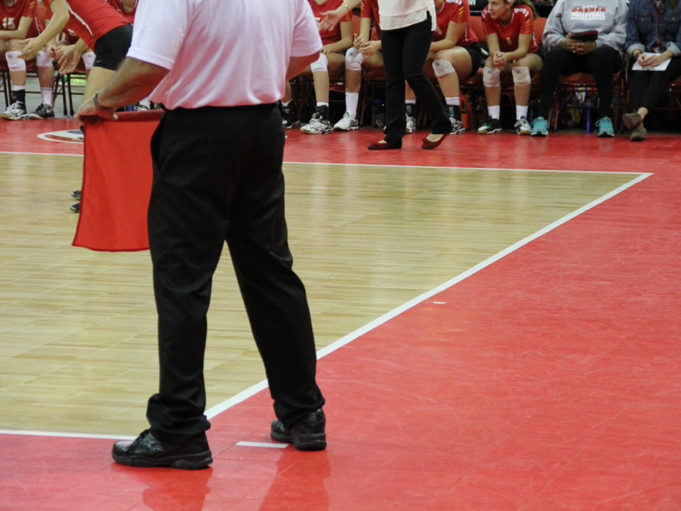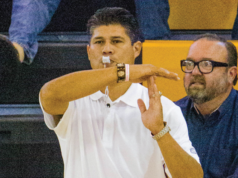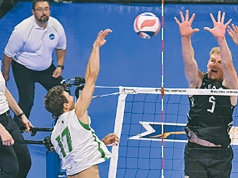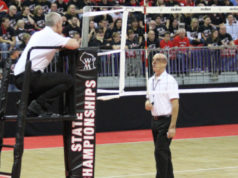Defining the playing area is an important part of the referees’ prematch duties. Identifying obstacles, any changes in court surface or elevation, and establishing other non-playing areas will help teams play freely within the confines of the playing space. That also helps referees determine the legality of a play that may involve those non-playing areas once the match begins.
All rules codes allow a player to contact a ball that is above a non-playing area provided they have a part of their body touching the playing surface at the moment the ball is contacted. Likewise, the rules codes allow a player to continue into a non-playing area after playing the ball. The three rules codes are also consistent in stating that a player standing entirely in a non-playing area at the moment the ball is contacted will be ruled out of bounds.
The key for referees in determining the legality of those plays is determining the position of the player. That is especially true when the playing action is quick and a player is hustling toward a non-playing area to save an errant pass. The PlayPic on the next page demonstrates one of the common situations in which a player tries to save an errant pass — near the team bench or spectator seating. It can be a challenge for referees to watch the contact of the ball while also keeping an eye on the player to ensure that a body part is touching the playing surface when the ball is contacted. In some cases, the second referee may be able to assist by focusing on the player’s position while the first referee watches the ball contact. The method for handling that situation should be discussed during the prematch conference. It will be important that the second referee not whistle “out of bounds” on a play that the first referee had planned to rule as legal.
Since those plays are often quick and sometimes difficult to cover, the referees should allow play to continue unless they are 100 percent certain that the player was not touching the playing surface as the ball was contacted. That kind of play is exciting for the spectators and builds momentum for a team Don’t whistle a fault unless it is clear the player was out of bounds.
What's Your Call? Leave a Comment:
Note: This article is archival in nature. Rules, interpretations, mechanics, philosophies and other information may or may not be correct for the current year.
This article is the copyright of ©Referee Enterprises, Inc., and may not be republished in whole or in part online, in print or in any capacity without expressed written permission from Referee. The article is made available for educational use by individuals.
















